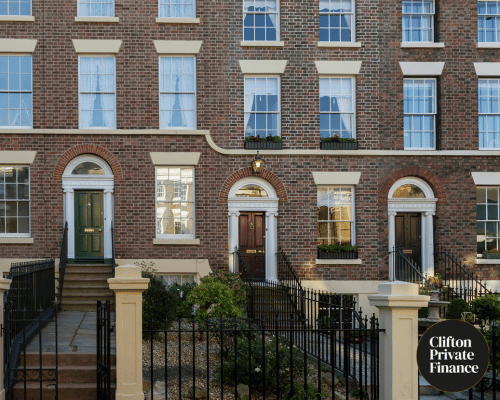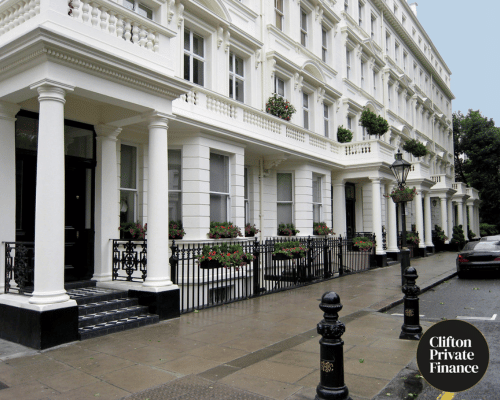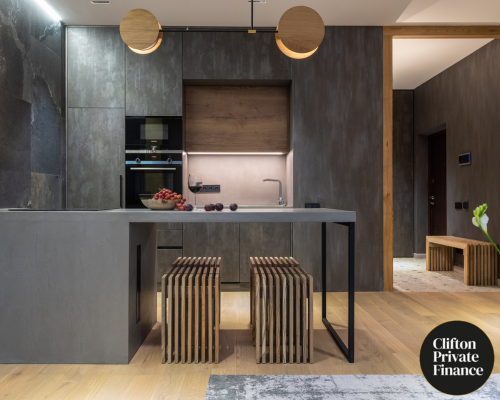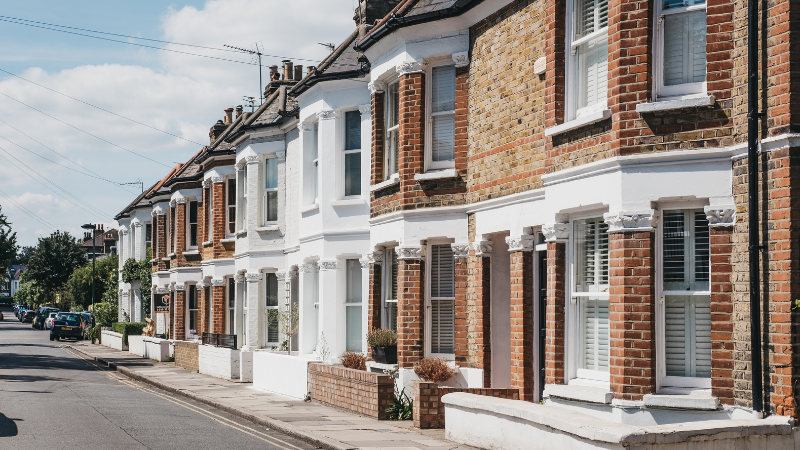Categories
Tax on Rental Income | Ltd Company vs Individual Explained

Buying a property and renting it out is a great way to have a long-term investment that also makes money each month, but working out the numbers can be complicated and confusing.
At Clifton Private Finance, we solve these quandaries for our clients regularly - let us use our expertise to help you understand how tax on rental income actually works.
Note: All figures in this article are based on current UK 2024/25 tax regulations.
The Basics of Tax on Rental Income in the UK
In the UK, there are two ways that tax on rental income is typically dealt with. Either you are letting out your property as an individual alongside any existing income, or you are set up as a business. The tax rules for each are slightly different.
- If you are an individual then any profit you make on renting out your property is considered income, which makes it liable for income tax.
- If you are a business then any profit made on renting out the property is considered taxable profit and is subject to corporation tax. From here, the money is still held in the business's name, and is commonly withdrawn as 'dividends' by you as a business owner. This again incurs tax, but at a low rate - more on that later.
Because corporation tax is lower than income tax in many cases, without considering other factors it can seem that a business setup is preferable - however, this is not always the case.
In both cases, profit doesn’t mean ‘the amount someone pays to you in rent’, but ‘the amount left over once someone pays to you in rent and you take away the reasonable costs, or expenses, that are needed to maintain and manage that property’.
Notice that expenses do not include the mortgage, though mortgage interest may qualify for tax relief. We’ll cover tax-deductible expenses a little later in this article.

How Individual Income Tax is Affected by Rental Income
For some landlords, particularly those operating on a smaller scale, setting up a business structure is a cumbersome expense in both time and money that doesn’t offer enough benefit. Instead, the simple structure of an individual landlord may be chosen.
For example, if you have an annual salary of £40,000 in your day-to-day job, and make £15,000 per year in rental income, then your tax will be the same as if you were earning £55,000.
Because of the income tax bands, this could push you into a higher tax band (as would happen in this example). At £40,000, you would be paying the basic rate of 20% on your income over the personal allowance of £12,570.
Prior to letting out the property, this would equate to an annual tax liability of £5,486 (income tax due on £40,000 income). The first £10,270 of the rental income would still be within this basic rate band (the higher rate starts at £50,270) and thus be taxed at 20%, while the remaining £4,730 would be taxed at the higher rate of 40%.
This would result in a total of £3,946 tax due from the rental income, in addition to the existing tax liability of £5,486.
Allowances and Expenses - Lowering Your Individual Income Tax
The figures in the example above do not take into account any of the tax relief options that exist. There are three important considerations:

The Property Allowance
For those making low incomes from rental properties, there is a £1,000 property allowance. This states that anyone earning up to £1,000 per tax year does not have to declare it for tax purposes. It is effectively ignored by HMRC (HM Revenue and Customs).
The Individual Mortgage Interest Tax Credit
Individual landlords may claim 20% tax credit against the interest on their mortgage. Many buy-to-let mortgages are interest-only, meaning this is effectively 20% of the mortgage costs, however, if you have a repayment mortgage then you must determine the principal repayment and interest parts of that and claim only against the interest portion.
- Interest-only example - An interest-only mortgage with repayments of £550 per month (£6,600 per year) can claim a total of £1,320 tax credit per year (20% of £6,600).
- Repayment example - A repayment mortgage of £1,340 per month (£16,080 per year) is shown to have been broken down as £9,546 in interest payments and £6,534 in repayment of the loan principal. The tax credit claimable is £1909.20 (20% of £9,546).
Note that the tax credit is applied against the total income tax due, not as a part of an overall expenses calculation. This makes it a stronger level of relief than people assume.
You cannot claim both mortgage interest tax credit and property allowance.
Tax-Deductible Expenses
In addition to the mortgage interest tax credit, you may claim for any expenses that are wholly and exclusively from renting out the property.
These include:
- Property Management and Letting Agent Fees - If you outsource your property management, then the entire cost of this can be offset as an expense.
- Repairs and Maintenance - If you need to fix something in the property (a broken boiler, or leaking roof) or you incur costs keeping the property in a good condition (buying a new carpet to replace a worn one), then these can be claimed as an expense.
- Insurance - Your insurance costs (building and contents insurance, landlords liability insurance) are deductible.
- Bills and Council Tax - If you pay the bills, they can be claimed as an expense. You cannot (for obvious reasons) claim for bills covered by your tenants.
- Ongoing Legal and Accountancy Fees - If you need to employ a solicitor to evict a tenant, or you use an accountant, these fees can be offset against tax.
- Travel Expenses - Driving to and from the property can be claimed (at 45p per mile), as well as any tickets for public transport or costs from parking. This also includes accommodation costs if you need to stay overnight nearby for a legitimate reason.
Also, while any services you outsource are legitimate expenses, you cannot claim for your own time - you working on your individual landlord property for your own income is simply you working for income, which you have to pay tax on!
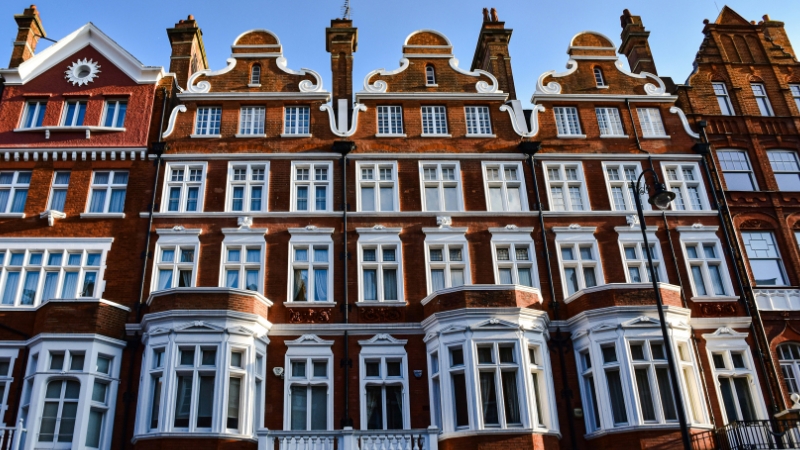
A Comprehensive Example of an Individual’s Tax on Rental Income
Simon owns a house on a buy-to-let interest-only mortgage that is rented out to long-term tenants at £1,650 per month. His mortgage payments are £950 per month.
Outside of his rental house, Simon has a salaried job which pays him £53,500 per annum.
Simon is a hands-on landlord. He manages the property himself, though he does work with some trusted local contractors for maintenance and repairs.
Over a year, Simon’s costs include:
- £11,400 paid in mortgage interest. He can claim £2,280 in mortgage interest tax relief.
- 1,530 miles of travel to and from the property. At 45p per mile, he calculates this as £688.50.
- £96 in parking costs.
- £1,850 in repairs thanks to a problem early on with the garage roof, and a mid-summer plumbing issue.
- £600 in ongoing maintenance.
- £380 in insurance costs.
- £240 for his accountant.
Simon calculates his total tax-deductible expenses (excluding mortgage interest) at £3,854.50.
His gross annual income from his rental is £19,800, less the £3,854.50 in expenses leaves a total income to declare of £15,945.50.
From this perspective, Simon realises his house rental this year has been a loss. He brought in a total of £19,800 but he has paid out:
- £11,400.00 to the mortgage provider.
- £3,854.50 in non-mortgage expenses.
- £4,098.20 to HMRC
A total of £19,352.70 and thus a meagre profit of less than £500 as well as all his time and effort (and worry). However, Simon’s property has increased in value by approximately £8,500 over the year, so he still feels his investment is worthwhile.

Capital Gains Tax for Individuals
Income tax is not the only tax obligation that needs to be accounted for. Many rental properties are bought as investments on interest-only mortgages with a plan that they are sold at the end of the mortgage term.
When selling a rental property, individuals are liable for Capital Gains Tax (CGT) on the profit made from the sale. Unlike other assets, residential property has a specific CGT rate:
- 18% for basic rate taxpayers
- 28% for higher rate taxpayers
Note that the capital gain will be added to the annual income for the year to determine the rate of tax, so it is more likely that residential properties fall into the 28% bracket (at least in part).
Like income tax, CGT can be offset against specific expenses, lowering the tax paid. These capital expenses include:
- Capital Improvements - Money spent on property improvements, such as an extension or renovation for accessibility needs. Note that maintenance and repairs do not qualify as they offset income tax instead.
- Third-Party Fees - Legal and administrative fees relevant to the sale of the property, such as estate agent commission, solicitors fees and the SDLT (Stamp Duty Land Tax) paid at the point of purchase.
- Private Resident Relief (PRR) - This applies if you have lived in the property as your main home prior to renting it out. CGT is not paid for the time that you lived in the home with an additional nine months allowance in all cases.
- CGT-Free Allowance - There is also a £3,000 CGT-free allowance which is applied in all cases - this makes any profit £3,000 and under not liable to any tax.
An Example of Individual Capital Gains Tax on a Residential Property
Frida lived in her home for five years before deciding that she wanted to rent it out and move elsewhere. As part of that, she converts her loft to get an extra bedroom and en-suite bathroom. Five years later, she decides being a landlord is no longer for her and sells up.
When she bought her home it cost her £210,000; she sells it for £338,000 ten years later.
Her gain is £128,000. However, there is much for her to offset:
- Her loft conversion was a capital improvement and cost £12,500.
- She pays estate agent fees of £4,800 to sell the property and legal fees of £1,700 - a total third-party fees of £6,500. As a first-time buyer when she bought her home, she paid no stamp duty.
- In total, she owned the property for 124 months (a little over ten years). She lived in it for 61 months, and also gets an additional 9 month allowance, totalling 70 months. This represents a total of 56.45% for private resident relief.
- She has her £3,000 CGT-free allowance.
The order for calculating CGT is specific:
- Calculate total gain - For Frida, this is £128,000.
- Apply capital improvements for net gain - This takes Frida’s net gain to £115,500.
- Apply PRR - As Frida has 56.45% PRR, this cuts the taxable gain to £50,300.25 (100 - 56.45 = 43.55% of £115,000).
- Account for fees - This reduces the taxable gain to £43,800.25.
- Apply CGT-free allowance - Resulting in a final taxable gain of £40,800.25.
Frida earns £35,000 annually before tax, making her a basic rate tax payer before adding the capital gains.
The first £15,270 of her capital gain will still fall inside the basic rate, with the remaining £25,530.25 taxed at the higher rate. This results in totals of £2,748.60 in the basic rate (18% of £15,270) and £7,148.47 (28% of £25,530.25) of higher rate tax.
Frida’s total CGT liability is £9,897.07 - a little under £10,000.
Frida works out that her end profit after tax for the ten years of home ownership needs to take into account:
- £210,000 original purchase
- £12,500 loft conversion
- £6,500 legal fees
- £10,000 CGT
Having sold her property for £338,000, she has gained a net return on investment of £99,000.

Setting Up a Limited Company - Tax on Rental Income for Businesses
All the above calculations have been based on individuals renting out their properties without using a business structure for the purpose. Setting up a limited company has a number of tax advantages, though it does add an administrative burden that may be off-putting.
Speaking to an advisor can help you work out the balance. At Clifton Private Finance we have a team of expert buy-to-let mortgage advisors who can help you understand which is right for you. Why not contact us today to learn more? And read on!
Compare the latest buy to let mortgage deals:
How Business Tax for Rental Properties Works
Businesses do not pay income tax, instead, the business must pay corporation tax on all business income. This makes an immediate saving as corporation tax rates are lower than income tax at the same levels.
Thus, moving the rental income from your tenants to you is a two-stage taxation process, and both must be considered when balancing the two options.
Businesses also have different allowable expenses to offset against taxation. The most significant of these is that finance costs, including 100% of the mortgage interest, are legitimate tax-deductible expenses.
Corporation Tax and Dividend Tax
The main rate of corporation tax is 25% for all companies with profits over £250,000. Companies making less than this amount pay less tax, with those with profits up to £50,000 paying only 19%.
Drawing the money from the business as dividends incurs dividend tax. This is only 8.75% at the basic rate, and 33.75% at the higher rate, with rate bands identical to income tax. Furthermore, the first £500 of dividend payments each year is tax free.
Business Allowances and Expenses
In a similar way to an individual landlord, companies can deduct expenses that are wholly and exclusively from the renting out the property. They do not have mortgage interest tax relief, instead claiming the full interest on any mortgage payments as a business expense.
The vast majority of business buy-to-let mortgages are interest only, meaning the full mortgage payment is a tax-deductible expense, however, if the business does have a repayment mortgage, only the interest portion can be declared as an expense as explained earlier.
Comparing Individual vs. Business Tax on Rental Income
Let’s return to the earlier example of Simon, with his house that he’s renting out for £1,650 per month - this time under the business structure.
Though he is running the small property management firm, Simon retains his main employment which brings in £53,500 per year (before tax).
Simon continues to manage the property himself and considers part of his dividend payments from SPM as payment for this work - this makes administration easier. Simon also has decided to upgrade the accountant’s service to ensure everything runs smoothly and that the business accounts are properly up-to-date; SPM pays £600 per year for this service.
SPM’s costs for the year are:
- £11,400 paid in mortgage interest. This is an allowable expense for the business.
- 1530 miles of Simon’s travel to and from the property. This is paid at 45p per mile totalling £688.50.
- £96 in parking costs.
- £1,850 in repairs.
- £600 in ongoing maintenance.
- £380 in insurance costs.
- £600 for the accountant.
The total tax-deductible expenses are £15,614.50.
SPM’s turnover relies entirely on this single property and is £19,800.00. Once the £15,614.50 in expenses is accounted for, this is a gross profit of £4,185.50.
The business must pay 19% corporation tax on this figure, for a total tax liability of £795.25, leaving a net profit for the year of £3,456.25.
SPM pays this to Simon as a dividend. As Simon’s personal income puts him on the higher tax rate, this is taxed via dividend tax at 33.75%. With the first £500 tax free, Simon pays an additional tax bill as part of his annual self-assessment of £997.73 (33.75% of £2,956.25).
Comparing Individual vs. Business Tax on Rental Income
|
|
Individual |
Business |
|
Total Tax Paid |
£4,098.20 |
£1,792.98 |
|
Total End Profit |
£447.30 |
£2,392.52 |
For immediate profit, it can be clearly seen that the business model would serve Simon better than being an individual landlord.
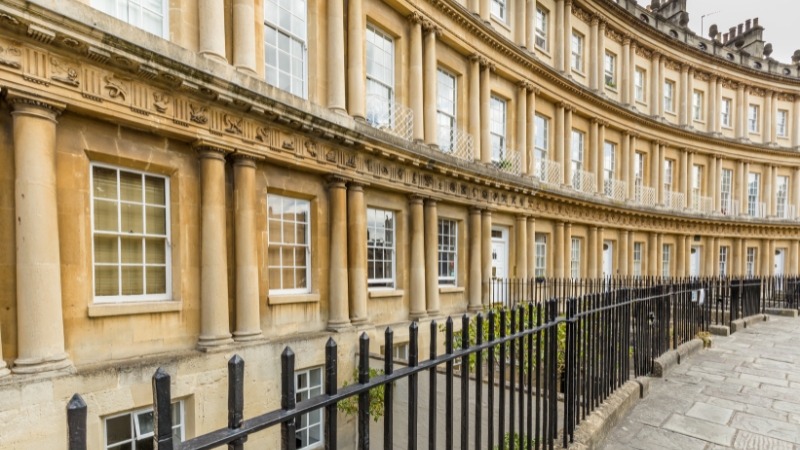
5 Other Considerations
When making the decision between being a landlord as an individual vs. setting up a limited company, there are some finer nuances that must be considered:

Moving the property to the business
If you already own the property and are selling it to the business, this sale will incur SDLT (Stamp Duty Land Tax) based on the current market price (and with a 3% surcharge) which will likely be many thousands of pounds, as well as the legal fees involved.
It’s not just as simple as ‘signing it over’. In many cases where you already own the property, this additional cost makes it better to just keep on as an individual. However, expanding by buying newer properties may be worth doing as a limited company.

Administration
Though very small micro businesses are relatively easy to maintain, there is still an extra level of regulation and administration that must be done as a business.
In Simon’s example above, this can be seen in the higher cost for the accountant, but there could be other considerations as the business grows.

Building a property portfolio -
Another advantage to limited company based landlords is that it is far easier to obtain a portfolio mortgage to increase your property empire. These help by leveraging the equity in one property to get more favourable terms when buying additional properties.
With the management and administration centralised, landlords looking to grow with more rental properties benefit greatly from dedicated portfolio mortgages. Speak to a Clifton Private Finance commercial mortgage advisor to find out more.

Selling on
Companies do not pay CGT, instead corporation tax is paid on the sale of business owned properties. This is generally lower than CGT, especially when all allowable tax-deductible expenses are applied (although there is no benefit from PRR or the CGT-Free allowance).

Inheritance Tax (IHT)
An additional layer of taxation exists when you die and pass your home on to your heirs. Inheritance tax on rental properties is often considerable and can be a great burden that results in the property being sold.
Business structures can greatly alleviate inheritance tax problems if set up with comprehensive IHT planning in place. Clifton Private Finance’s IHT partners can help you plan for the future with in-depth IHT solutions.
How We Can Help
Balancing the pros and cons of rental income tax options between being an individual and structuring as a limited company can be complicated, with each situation a unique case that needs dedicated analysis and planning.
Our specialist mortgage teams have all the knowledge you need to navigate the complicated tax and finance landscape to make the most of your landlord plans.






